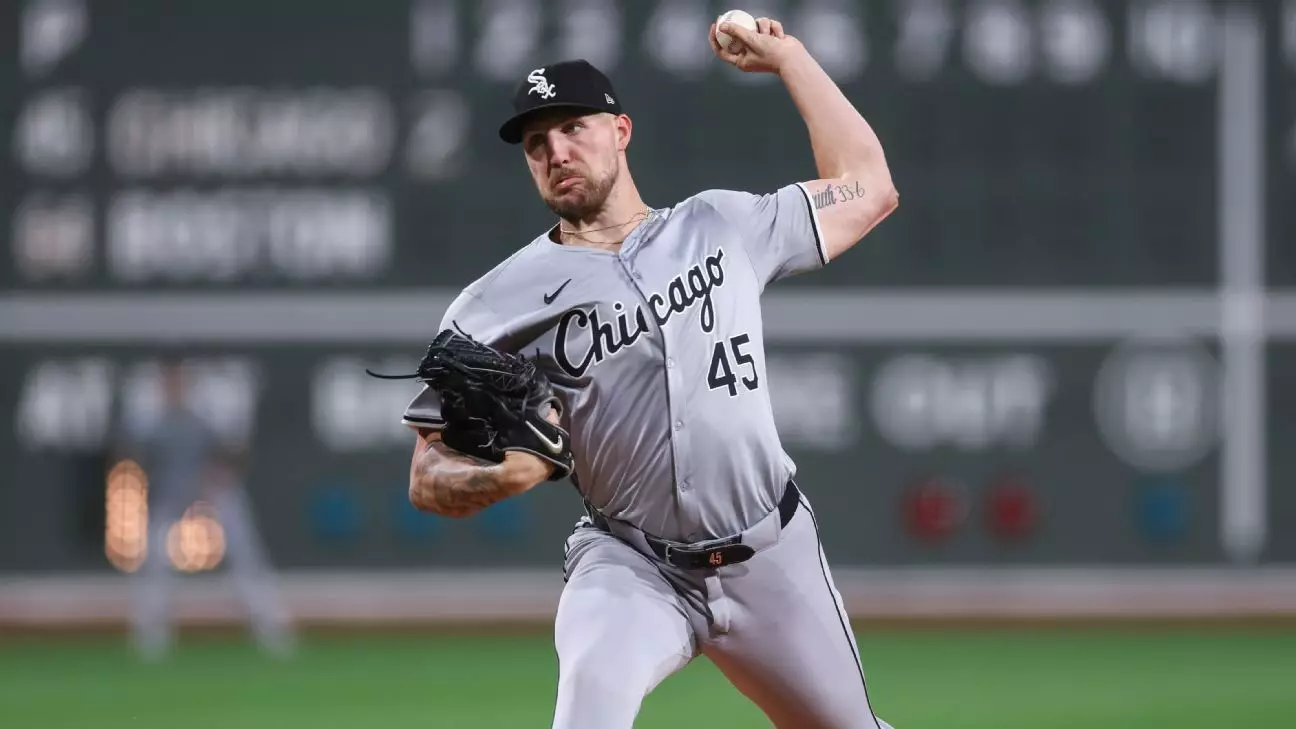The Boston Red Sox have faced persistent challenges in solidifying their starting rotation over the past season, leading to a fresh perspective on how to effectively manage their pitching staff for the 2025 season. This time, the team is contemplating the implementation of a six-man rotation as a tactical shift aimed at enhancing performance and maximizing the capabilities of their pitchers. Craig Breslow, the Red Sox’s chief baseball officer, indicated a willingness to explore diverse strategies during Monday’s press conference — demonstrating a renewed approach to roster management amidst a wave of offseason trades and signings aimed at bolstering the team.
Last season was particularly tumultuous for the Red Sox on the pitching front. The departure of Chris Sale, who went on to claim the National League Cy Young Award, posed a significant setback for the team’s ace options. This was exacerbated by an unfortunate injury to Lucas Giolito during spring training, leading to his season-long absence. The combined effect left the team scrambling and relying on an overtaxed bullpen, contributing to their failure to secure a playoff berth for a third consecutive year. Breslow’s acknowledgment of needing more than five capable starting pitchers shows an understanding of the challenges ahead and a proactive stance in preparing for the uncertainties that keep pitchers from consistently performing at their best.
As a remedy, the Red Sox have made strategic choices to add depth to their pitching lineup. The acquisition of Garrett Crochet via a trade with the Chicago White Sox is just one piece of an evolving puzzle. His 3.58 ERA in a struggling Chicago franchise reflects promise and potential; he is expected to be a pivotal addition in an effort to stabilize the rotation. Furthermore, signing established pitchers like Walker Buehler — a two-time All-Star with playoff experience — underscores the franchise’s commitment to improving their pitching staff.
Breslow’s openness toward deploying a six-man rotation introduces an innovative strategy that could redefine the Red Sox’s approach to pitching management. Typically, major league teams rely on a five-man rotation, but implementing an additional arm could improve performance by reducing the wear and tear on each pitcher. This adjustment could facilitate a more manageable workload, particularly in the earlier months of the season when teams face potential pitching constraints. The Red Sox’s heavy investment in starting pitching depth signals a thoughtful response to past struggles and a preparation for the unpredictable nature of a long season.
What is particularly exciting for Red Sox fans is not merely the quantity of pitchers, but also the quality. Buehler’s recent postseason performances highlight the potential for impactful play when he is healthy, while Patrick Sandoval, despite recovering from elbow surgery, brings talent that could enhance the rotation later in the season. Breslow’s confidence in having an abundance of options provides a rallying point for fans anticipating a more dynamic and versatile roster.
While the focus on starting pitching is crucial, Breslow asserts the importance of balancing the overall team architecture. Addressing a lefty-heavy lineup and fortifying the bullpen are also high on the priority list. The winter acquisitions have revitalized optimism around the team, yet there lies a greater undercurrent of strategic shifts that extend beyond pitching.
Breslow has also made it clear that the franchise does not intend to trade Triston Casas, the promising young first baseman. This decision signals a commitment to nurturing talent rather than trading away potential future stars, fostering a culture that encourages development alongside tactical acquisitions. This sentiment aligns with the broader vision of maintaining core players like Rafael Devers while exploring creative ways to enhance team dynamics.
The Boston Red Sox are taking significant strides to return to contention by re-evaluating their approach to pitching. With a commitment to depth, flexibility, and young talent, they are positioning themselves for a resurgence in the competitive landscape of Major League Baseball. As 2025 approaches, all eyes will be on how these strategies play out and whether they translate into the success that Red Sox Nation has long awaited.

